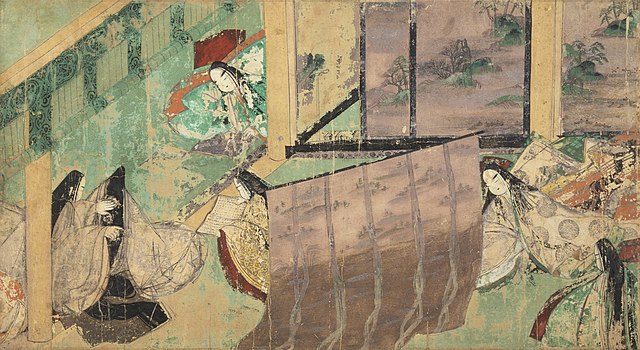Yōga is a style of artistic painting in Japan, typically of Japanese subjects, themes, or landscapes, but using Western (European) artistic conventions, techniques, and materials. The term was coined in the Meiji period (1868–1912) to distinguish Western-influenced artwork from indigenous, or more traditional Japanese paintings, or Nihonga (日本画).
Lake Shore (湖畔), by Kuroda Seiki (1897)
Reminiscence of the Tempyō Era (天平の面影), by Fujishima Takeji (1902)
Japanese painting is one of the oldest and most highly refined of the Japanese visual arts, encompassing a wide variety of genres and styles. As with the history of Japanese arts in general, the long history of Japanese painting exhibits synthesis and competition between native Japanese aesthetics and the adaptation of imported ideas, mainly from Chinese painting, which was especially influential at a number of points; significant Western influence only comes from the 19th century onwards, beginning at the same time as Japanese art was influencing that of the West.
Set of sliding doors of Frolicking Birds in Plum and Willow Trees by Kanō Sansetsu, 1631, Important Cultural Property
Mural painting from the Takamatsuzuka Tomb. National Treasure.
Panel from The Tale of Genji handscroll (detail). National Treasure.
Siege of Sanjō Palace






